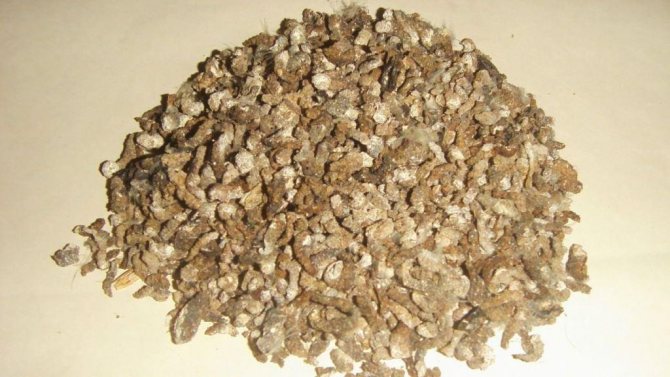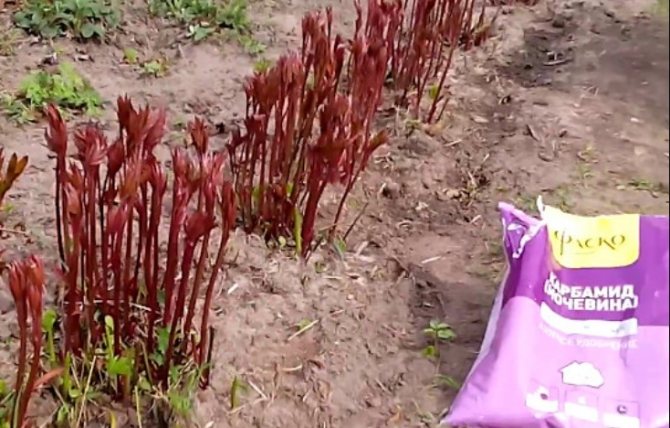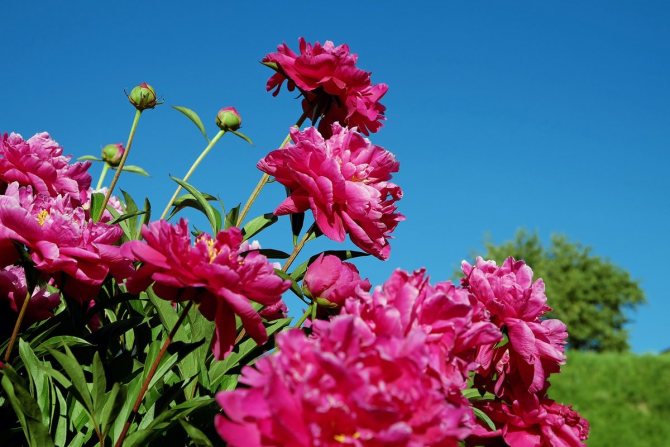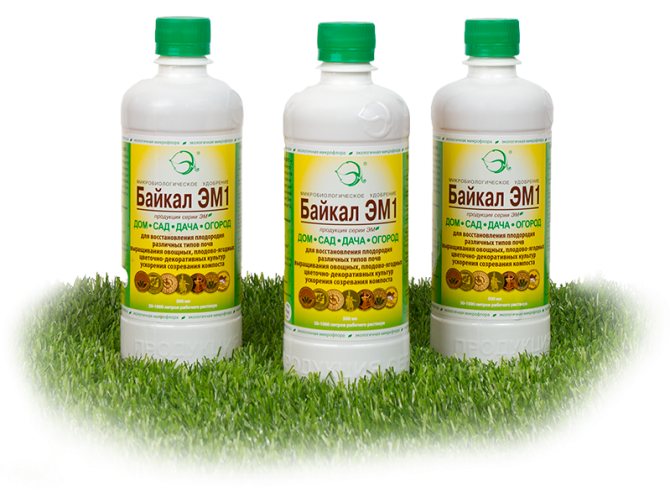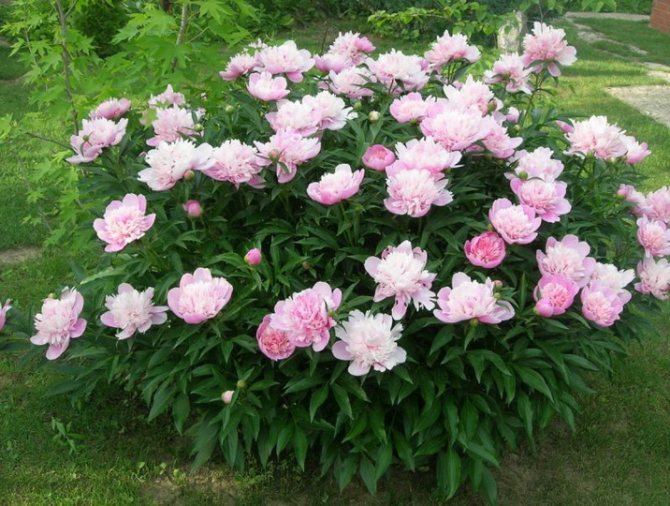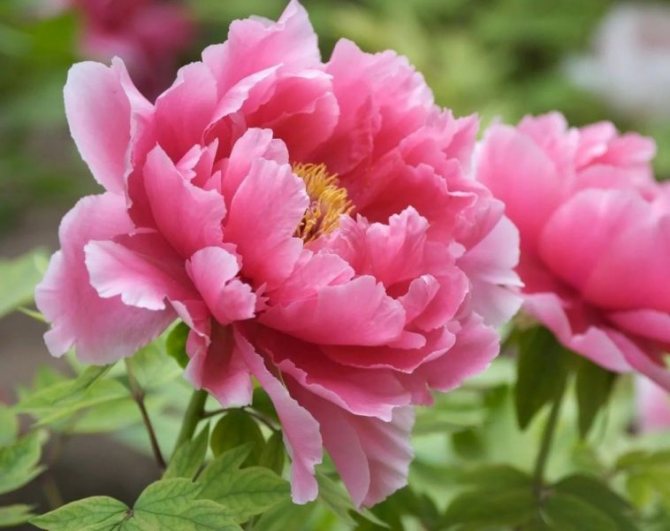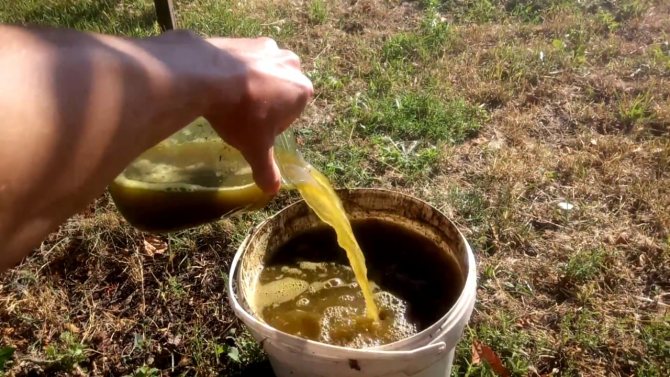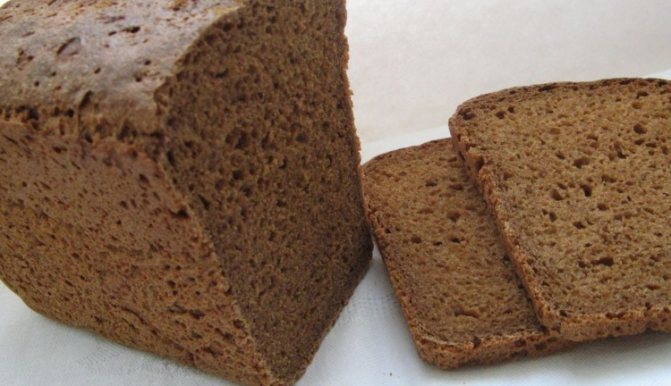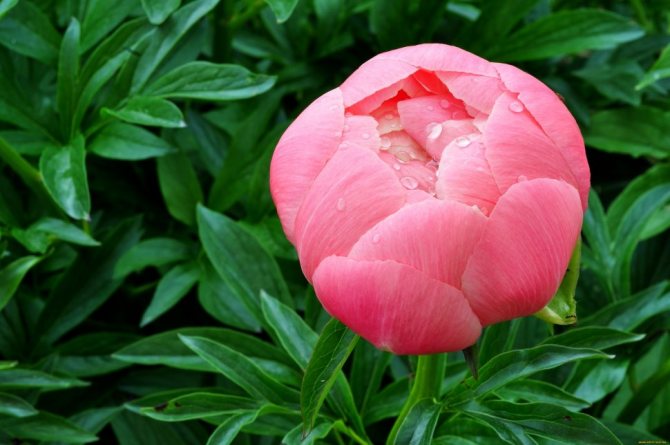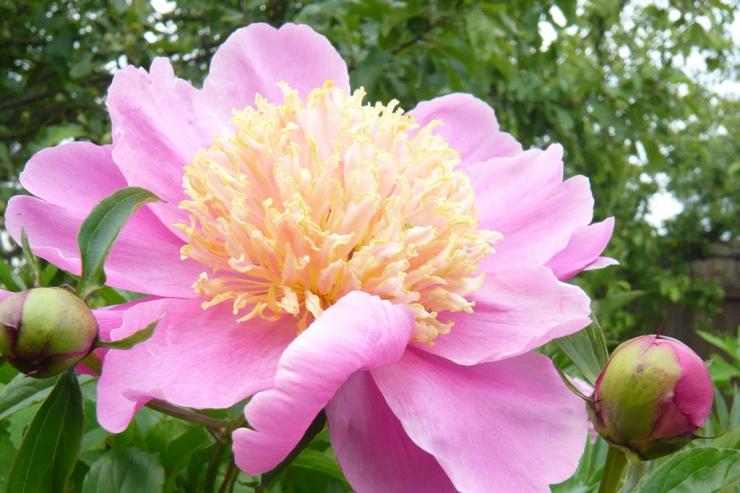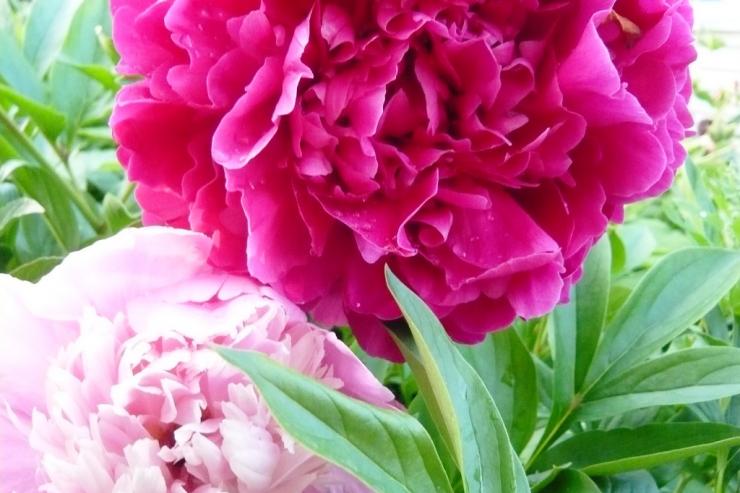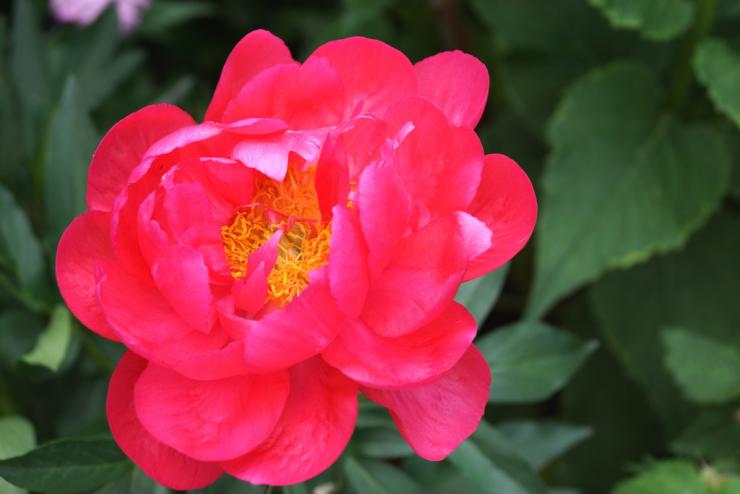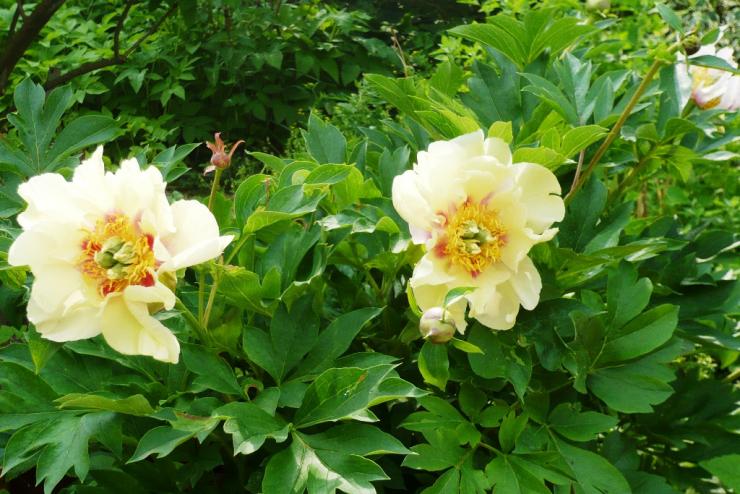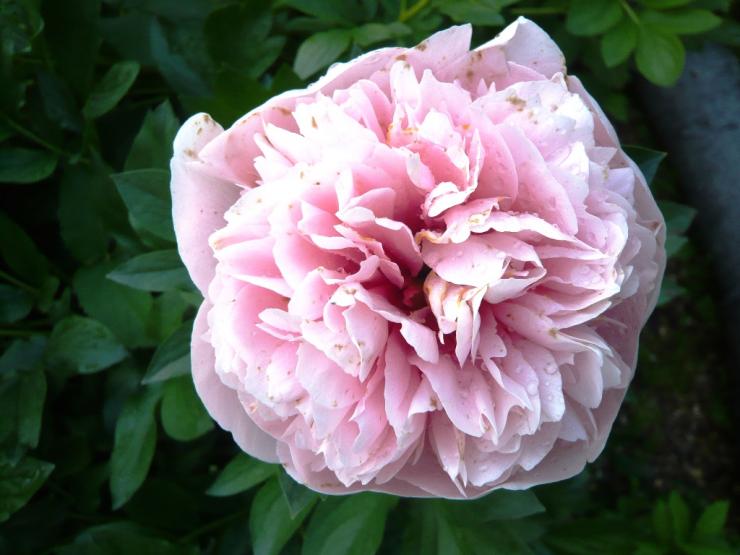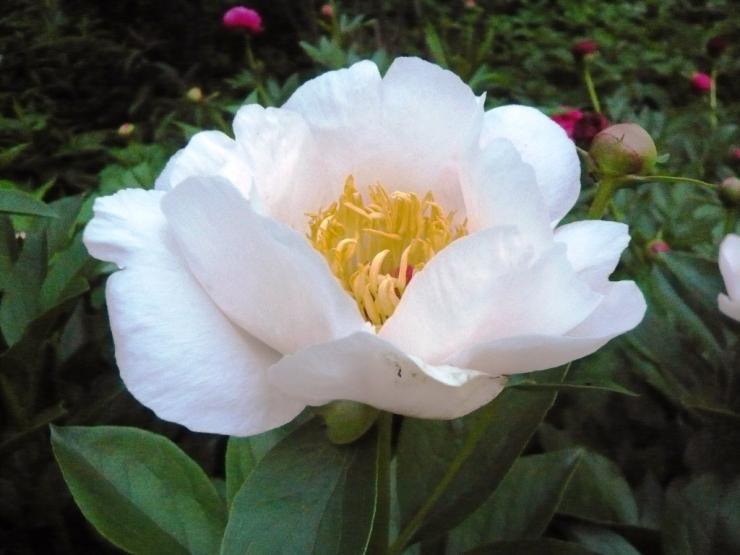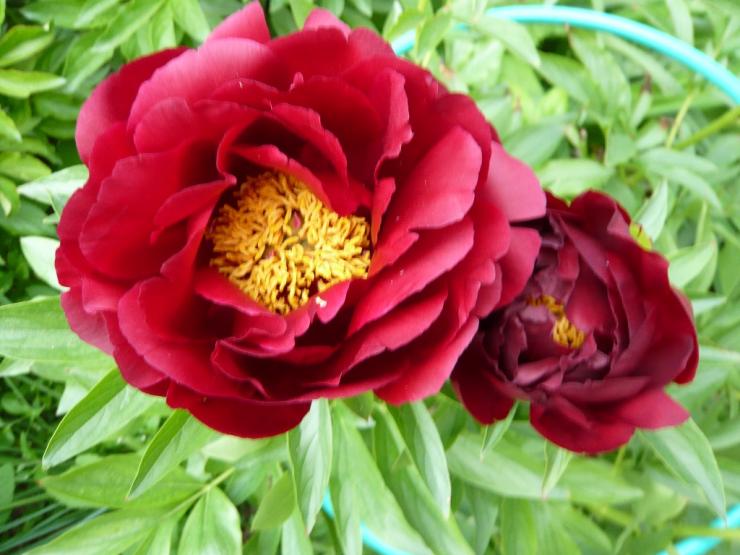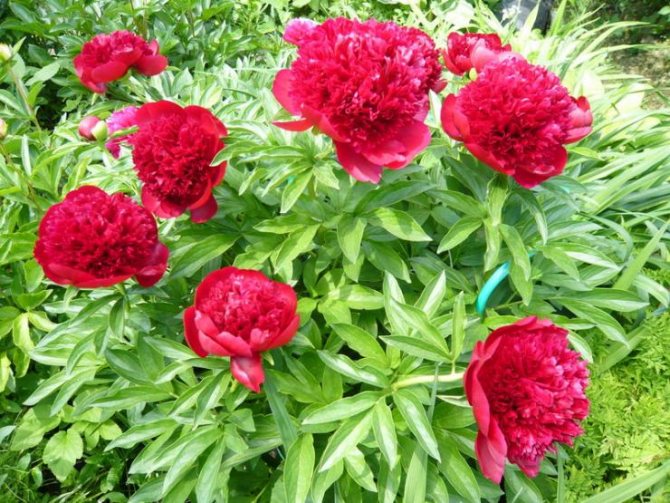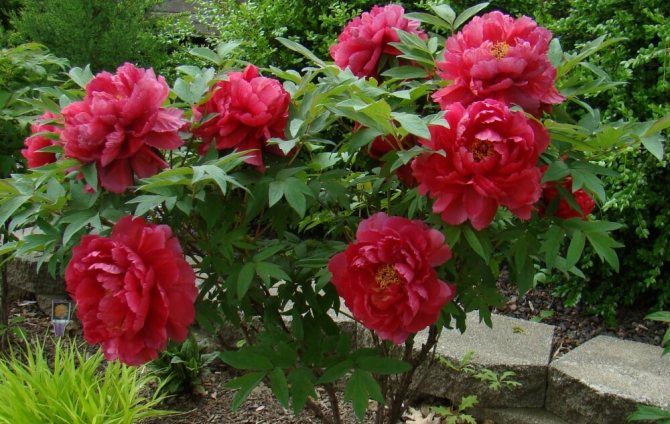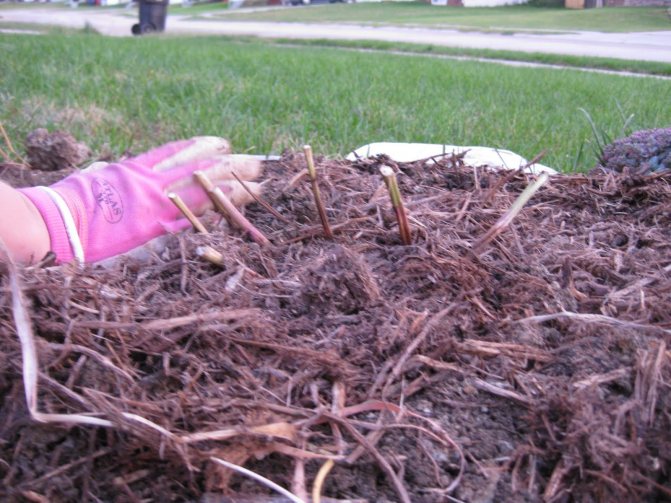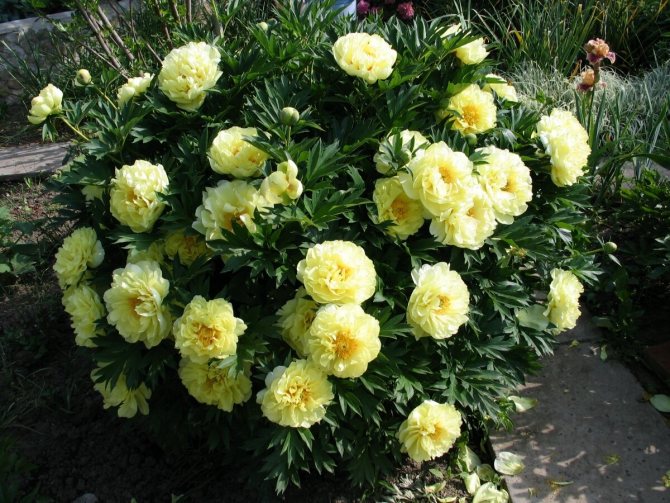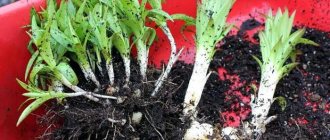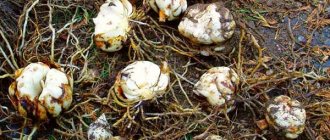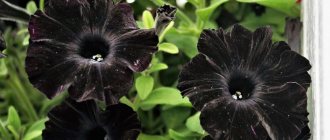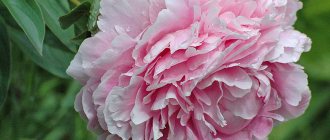Feeding peonies, both tree-like and herbaceous, is necessary, despite the unpretentiousness of the flower. A beautiful plant with large bright inflorescences, a delicate aroma - a favorite of most gardeners.
Lush color will delight after frequent transplants, separation of children, but if you take proper care. Especially, this applies to the spring period, when the peony awakens after hibernation.
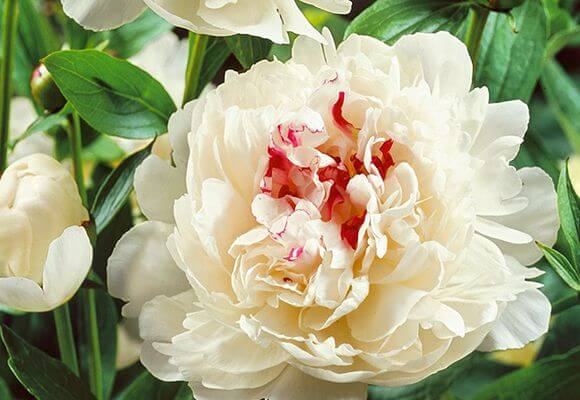
Why fertilize?
If the peonies receive an insufficient amount of nutrients, the decorative qualities of the plant are lost. And after a few years, the plant may stop blooming. Over time, the earth is depleted, so it needs to be nourished with trace elements. Autumn and spring feeding of peonies is a prerequisite for the beauty of the bushes.
Water helps to dissolve trace elements in the soil around the plant. Through the suction roots, nutrients are distributed throughout the plant.
Preparation of planting holes
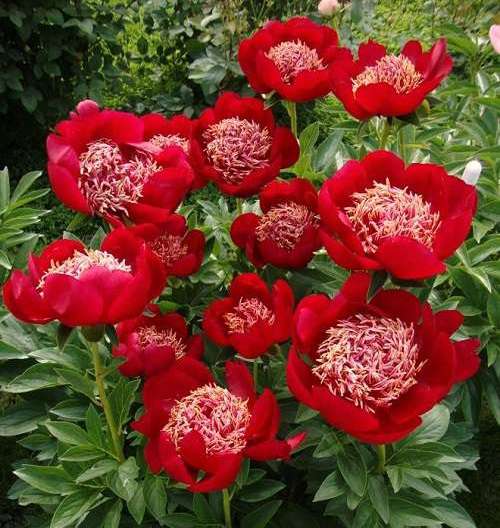

Peonies have a rather powerful root system, which grows in depth and in breadth, so it is necessary to prepare a planting hole at least 60-70 cm in diameter and 70 cm deep.
If we dig a hole not deep enough, then the roots of the peony, having reached solid ground, will stop growing.
Do not forget to put drainage at the bottom of the planting pit. It can be gravel, coarse sand, or broken brick.
Then we fill the lower part of the pit with an earthen mixture, which consists of the upper layer of earth, rotted manure, compost and peat, it is also good to add 150-200 g of superphosphate or 300-400 g of bone meal or ash, and if your soil is acidic, then it is also a good idea to add 200-400 g of crushed slaked lime.
Mix the mixture thoroughly and fill it with water. We fill the upper part of the pit with good garden soil without adding any fertilizers, and we will plant the plant in it.
I recommend preparing the planting hole in advance, about a month before planting, so that the earth has time to settle.
If you could not do this and prepare the hole right before planting the peonies, then the soil must be tamped slightly so that after planting it does not settle and then the planted plant may end up at the wrong depth that is required, which will negatively affect the growth of the plant ...
How to feed?
You need to feed flowers at the age of 3 years. For a healthy plant appearance and good flowering, it is necessary to feed three times:
- In the spring, when the snow begins to melt. Around the trunk of the plant, you need to scatter 15 g of nitrogen (N2) and 20 g of potassium (K). Substances dissolve in melt water and penetrate into the ground, providing top dressing for the bushes.
- Into budding. It is recommended to add 15 g of potassium (K), 20 g of phosphorus (P), 10 g of nitrogen (N2) under the bush.
- 14 days after flowering. Nutrients are essential for bud formation for the next flowering period. To do this, add 20 g of phosphorus (P) and 15 g of potassium (K).
It is better to combine plant nutrition with watering so that useful components get to the roots faster.
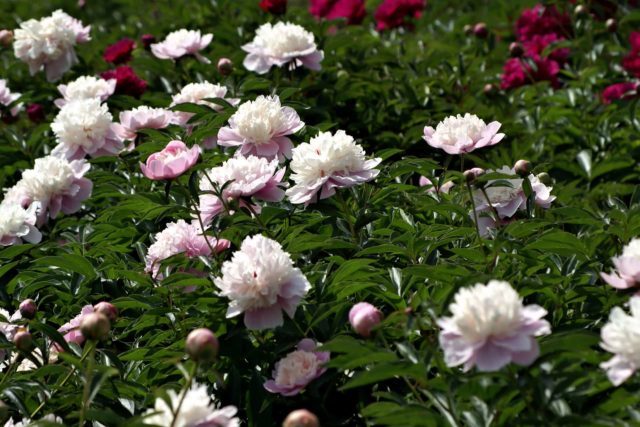

A prerequisite for the beauty of the bushes is autumn and spring feeding
What top dressing do peonies like:
- Phosphoric. Superphosphate is the most common fertilizer in this group. After using it, after a year, large and lush flowers are formed on the bush.For 1 m2 you need 50 g of "Superphosphate". If the soil is highly acidic, it is recommended to apply Superphosphate with chalk or dolomite flour. Phosphate flour contains a large amount of phosphorus, but is relatively safe. Phosphate fertilizers are long lasting.
- Potash. They are versatile, as they are suitable for any type of soil. They are brought into the ground in the last month of autumn for perennials. They help plants survive in low temperatures. Potassium sulfate and chloride are the most common fertilizers. In dry form, 10 g of potassium (K) and 15 g of phosphorus (P) are distributed under the bush. After that, the soil is watered abundantly with water.
- Organic. They accumulate humus in the soil, therefore they are among the best. Microorganisms in the soil are self-activated. Organic feeding includes: peat, compost, humus, vermicompost.
- Animal organic matter. It is recommended to apply manure under a bush in the first or second month of autumn for digging. For 1 m2 you need 4 kg of manure. Poultry droppings are more nutritious than manure. Its dosage is similar to that for humus.
In autumn, peony bushes are not fed with nitrogen. This substance accelerates the growth of the plant, which needs to prepare for winter in the fall. Reduces the resistance of the bush to low temperatures. What fertilizers are needed for peonies in the spring? After the winter we have gone through, nitrogen fertilizers will be indispensable.
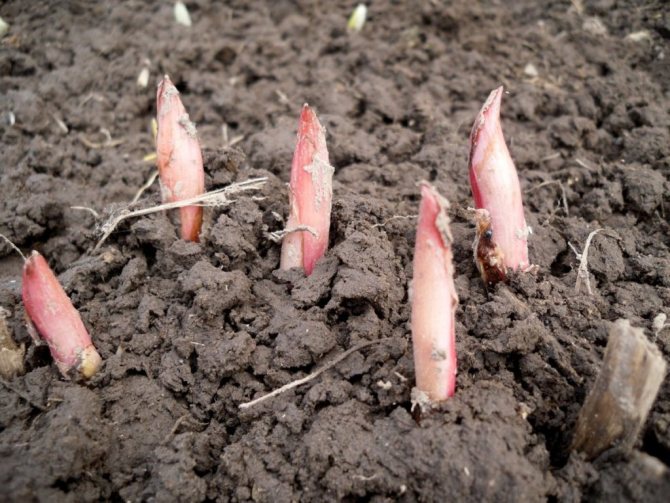

It is necessary to feed three times for a healthy type of plant
Site selection and soil kitchen
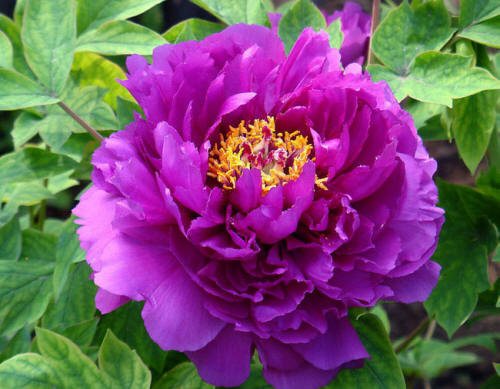

The decorativeness of the peonies, and their vitality and longevity depends on how correctly we choose a place for planting peonies. After all, peonies are not particularly fond of transplants, and can “live” in the same flower bed for several decades.
Therefore, the place for it must be chosen especially carefully so as not to disturb the plant once again.
With regard to the planting site, the peony is very capricious, and if he does not like it, then he can not wait for flowering. And no matter how diligently you look after him (feeding, watering, loosening) - the peony will not bloom. So, as soon as possible, we dig out our capricious handsome man and transplant to another place.
Best of all, it is an open, sunny place, but at the same time, protected from strong and cold winds.
Peonies do not like wet wetlands, so if in the place where you planned to plant them, the groundwater comes close to the soil surface, then it is worth planting the plants in raised fill beds.
It is not recommended to plant peonies closer than 2 m from buildings, because this creates very unfavorable conditions for their growth: in spring and autumn, increased soil moisture due to drops from the roof; and in summer, overheating of plants is possible due to the fact that the walls radiate heat.
It is also undesirable to plant peonies close to trees and shrubs, since shade and a constant lack of water and nutrients will interfere with their bloom.
I told you, dear readers, about the general recommendations for the place of planting of peonies, but what wishes will be specific to your plant will need to be checked in practice.
For example, my neighbor in the summer cottage has peonies growing beautifully and blooming magnificently at the very wall of the house.
Although peonies can grow on all types of garden soil, they will develop in different ways.
So, for example, on sandy soil, they have more stems, leaves and buds of renewal on rhizomes, while the stems grow thin, the leaves and flowers are medium-sized.
If your soil is clay, then the plants develop slowly: the number of stems does not increase so quickly and, accordingly, peonies multiply more slowly, but the stems grow thick, the flowers are very large and the leaves are powerful.
It is believed that loamy, nutrient-rich soils, well-drained but sufficiently water-absorbing soils, are best suited for peonies, since such powerful plants with large leaves simply need water throughout the growing season.
The peony does not like to grow on peat soils, due to the fact that the plant lacks moisture on them, then its excess, then overheating, then hypothermia - no constancy.
In addition, the increased acidity of this soil can cause such a dangerous disease as gray rot.
Therefore, if you have such a soil, then before planting, you just need to add ash, sand, bone meal, as well as organic fertilizers to it, thereby reducing its acidity.
Sandy loam soil can also be improved by adding a little clay and peat and, of course, organic fertilizers.
Types of dressings
Expert opinion on feeding peonies:
Peonies are unpretentious inhabitants of many household plots, which delight with friendly flowering every spring. Providing good nutrition is an important part of caring for long-livers in bloom. In the spring, fertilizers are applied under each bush with the inclusion of nitrogen and potassium. Before the beginning of flowering, the need for phosphorus increases. After the end of the flowering period, potash-phosphorus fertilizers are applied in order to lay flower buds for the next year.
Anatoly Baykov
For a beautiful flowering, the plant needs many nutrients. But most of all he needs:
- phosphorus (P);
- nitrogen (N2);
- potassium (K).
The type of dressing depends on the season. They can be supplied in peonies in 2 ways.
Foliar dressing
Provides lush bloom in summer. A young bush and over 3 years old can be fed monthly. What composition to choose, the gardener decides on his own. You can water the plant with a ready-made solution through a watering can.
Root dressing
In the spring, even before the snow melts, mineral mixtures are effective. It is recommended to scatter them on the ground under the bush. The melted snow transports the substances into the soil, where the plant absorbs them through the roots. In summer, flowers are also fertilized by scattering the mixture around the bush and watering abundantly.
Advice
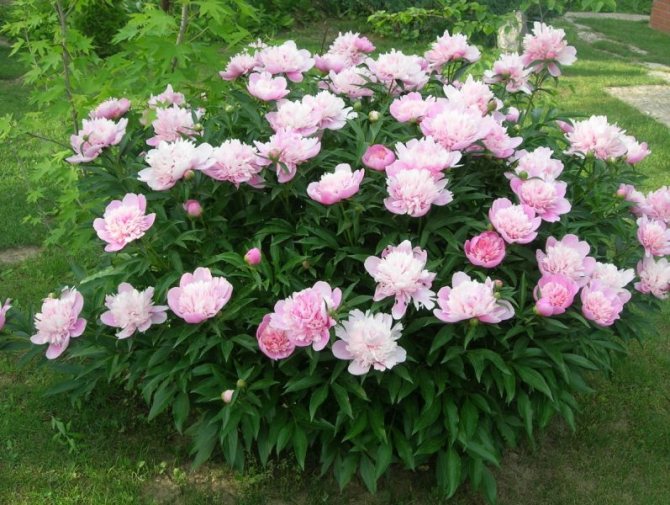

When growing peonies, you need to understand that only top dressing does not lead to abundant and beautiful flowering. This is just a part of the activities that a gardener performs when growing a flower garden. It is also important to carry out other agrotechnical measures: weeding, watering, loosening and other actions.
Important! When applying fertilizers, it is important not to get on the root collar of the plant, so as not to provoke a chemical burn.
The flowering of varietal and hybrid peonies begins only in the third year. Therefore, you do not need to be zealous with fertilizing young plants. If the flowers did not appear even in the fourth year, the reasons are as follows:
- low quality of planting material;
- when dividing the bush, the shares turned out to be small or very large;
- strong deepening of the plant during planting;
- transplanting an adult plant;
- trees or bushes with powerful roots grow nearby, which do not allow the peony to develop.
Each case is dealt with separately. Almost all of them require a second transplant. Small plots bloom later than others.
The cause of the cessation of flowering is usually a frost in late spring, which damages the flower buds. In this case, there will be no flowering in the current year. If the plant is severely damaged by frost, it may die completely. Flowers may not be present in the case of a dry previous summer or too favorable conditions, when the plant fades too quickly and abundantly.
The lifespan of hybrids is much shorter than that of varietal peonies. Already 8 years after planting, they often begin to hurt, they are affected by gray rot and other dangerous diseases. Therefore, such plants are dug up, separated and transplanted after treatment with a solution of copper sulfate.
Growth conditions and possible diseases affect the number of buds and their quality. Therefore, during the growing season, the bushes are examined several times. All damaged parts are cut out and treated. Otherwise, fertilization will not help you get a good flowering.
Industrial fertilizers
If you are wondering what kind of fertilizer to feed peonies in spring or autumn, try industrial fertilizers. Ready-made peony fertilizers are sold in gardening stores. Let's consider the most common ones.
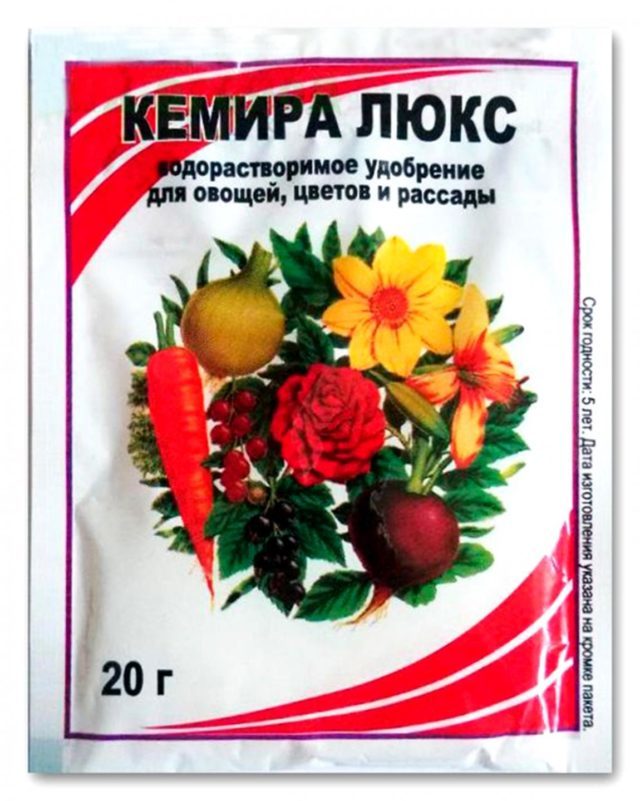

Kemira is the most popular
"Kemira"
It is a mineral fertilizer. It must be used three times per season. The optimal time for application is early spring and the period when the plant has already bloomed. The most popular is "Kemira-wagon". The drug is scattered on the ground under a bush and covered with earth. Kemira-kombi is suitable for the second feeding. A handful of the drug is poured under a bush and thoroughly watered. All components are quickly absorbed by the plant.
"Baikal EM-1"
Refers to organic products. Contains live microorganisms that improve the quality of the soil, its fertility. The drug is added to the compost. Then they need to mulch in the fall with a layer of 7-10 cm.
"Superphosphate"
Mineral fertilizers for peonies "Superphosphate" contain additional components - calcium, sulfur, magnesium. The drug improves soil productivity, metabolic processes, improves the root system, accelerates growth and flowering.
"Ammonium nitrate"
Top dressing of peonies in the spring with ammonium nitrate is required at the beginning of shoot growth. Add 10 g of carbamide, 7.5 g of nitrate, 5 g of potassium salt to a bucket of water. The solution is applied under the bush.
When to plant?
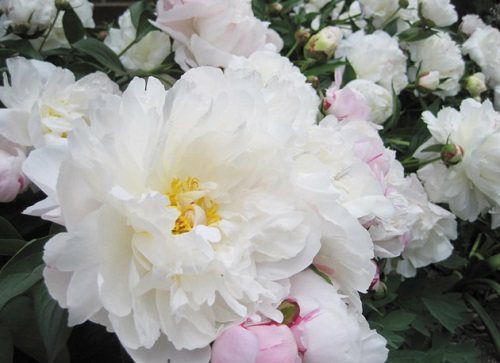

The planting time of peonies largely depends on the growing area, as well as on what kind of planting material you have.
These can be parts of an old rhizome obtained by dividing it (delenki), or young plants purchased from nurseries.
Delenki are best planted from mid-August to mid (end) September, since during this period the peony already has sufficiently formed renewal buds on the rhizome, but the formation of small suction roots has not yet begun.
If the summer was dry, then the buds of renewal may be delayed in their development and then the planting time can be postponed for 1-2 weeks.
It is important to remember that a peony takes 6 weeks to root well.
Of course, if the weather is warm for a long time, then you can start planting peonies in October, but it's better not to risk it.
A plant planted in late autumn requires special care, since it will go unrooted in winter. Therefore, it must be properly covered for the winter.
First, sprinkle the roots with peat or loose earth with a layer of 10-15 cm, and then additionally cover them with foliage or spruce branches on top. Better, of course, spruce branches, if you have one.
In the spring, covered in this way, late plantings must be undone and well watered if the weather is dry.
Good rooting of such a peony and its further development will largely depend on the amount of moisture received.
In the spring, I strongly do not recommend planting and replanting peonies. Because the buds of renewal in peonies begin to grow very early, when the soil has not yet thawed and, by the time when it will be possible to start transplanting and dividing the bush, the sprouts can already grow up to 10-15 cm.
And since they are very delicate and fragile, during the planting process there is a high probability that the sprouts will break, bend.
Transplanted, and especially those divided in spring, peony bushes, as a rule, lag behind in development from the bushes planted in autumn for a whole year, and under unfavorable weather conditions, the plant may die.
But in the spring it is good to plant young peonies bought in nurseries or specialized stores, which, with such a planting, will have time to acclimatize and grow well before winter.
Top dressing of peonies in spring with folk remedies
Many growers trust proven folk methods. Let's dwell in more detail on the most popular methods.
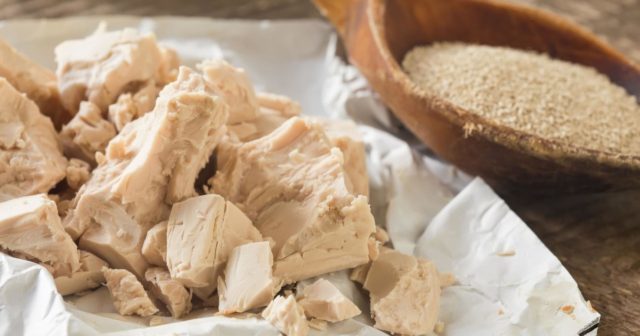

Yeast contains useful ingredients for peony bushes
Yeast
Contains many useful components. How to make a yeast feed for peonies in the spring? Dissolve 100 g of dry yeast in 10 liters of warm water. First, it is watered simply with water, then with a yeast composition, then again with water.
Bread dressing for peonies
The recipe doesn't take long. Feeding peonies with bread infusion ensures their lush flowering. 0.5 kg of black bread croutons are soaked in a bucket of warm water. Add 50 g of sugar. Put in a warm place for ½ day. Then squeeze the bread and strain the solution. The infusion is enough for 1 bush.
Urea
To provide high-quality care for peonies in the spring, feeding should be carried out while the snow has not yet completely melted. The granules are scattered over the planting site. Melt water allows trace elements to quickly enter the roots. For spraying, 5 g of carbamide is added to 1 liter of water. If necessary, you can repeat the procedure in a month.
Manure
1 bucket of mullein requires 1 barrel of water. It is diluted with water in a ratio of 1 to 5. Poultry droppings are diluted with more water (25 buckets). To complete the process, all components are left in the sun for 10 days. After fermentation is complete, 0.5 kg of wood ash and 300 g of superphosphate are added to the container. Before use, cow dung is diluted in 2 parts of water, and bird droppings in 3 parts.
10% aqueous ammonia solution
Do you use folk signs in gardening?
It is important to correctly determine the dosage and use the drug not in its pure form. In 10 liters of water, 25 ml of ammonia is diluted.
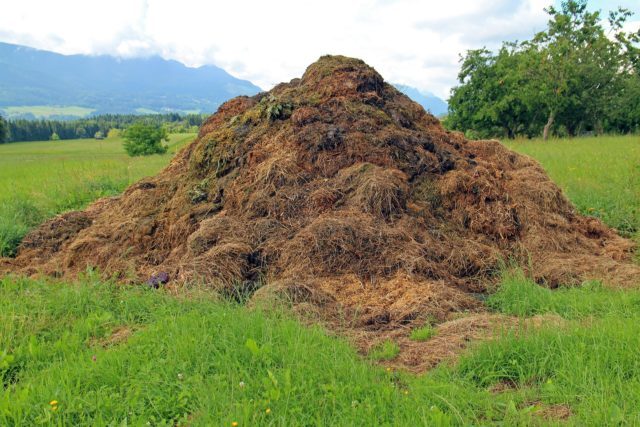

Most flower growers trust folk fertilizers.
Ash
Feeding peonies in spring with ash can be used in early spring. When the sprouts have not yet appeared on the surface of the earth, you can scatter the ash. This will strengthen the plant. In 10 liters of water add 1 liter of wood ash. Insist 7 days. Then you can start watering.
Gardeners use all of these methods to achieve lush blooms. It is undesirable to feed the plant with milk, it oxidizes the soil.
What do peonies need after flowering
In the summer, when the peonies have faded, they need to be fed. This is done so that the culture recovers its strength. It is worth using fertilizers with potassium and phosphorus at this time. For 10 liters of water, 30 g of superphosphate and 20 g of potassium sulfate are taken. After thorough mixing, irrigation is carried out in the furrows made in the root zone. It is very important to make sure that the solution does not get on the stems and leaves of the plant, otherwise a burn may occur.
Interesting!
In ancient times, it was believed that peonies can heal more than 20 different ailments. Therefore, they were planted near monasteries and temples.
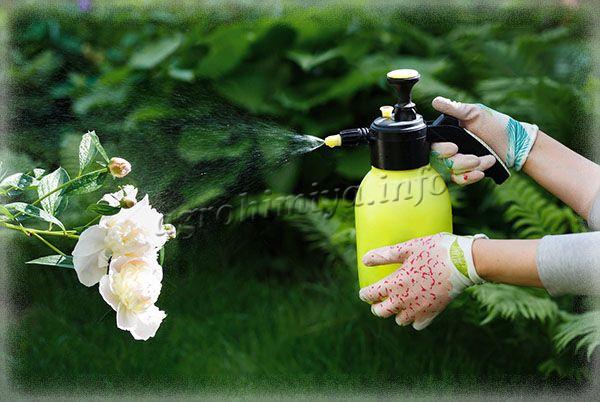

Foliar and root dressing should be carried out in the morning or evening.
Which method to choose?
Each gardener must decide for himself which method is closer to him. In industrial fertilizers, nutrients are selected in the right proportions. To achieve a positive result, you should only strictly adhere to the instructions. Traditional methods have proven to be effective, but take longer to prepare. Also, you can make a mistake in the dosage, harming the plant.
For budding and lush flowering
Fertilizing peonies for abundant flowering is an important part of flower garden maintenance.
Lush and long flowering can provide a complex of actions:
- introduction of trace elements;
- abundant watering;
- loosening the soil.
When using a large amount of organic fertilizers, the flower begins to grow green mass. Flowering, on the other hand, slows down.
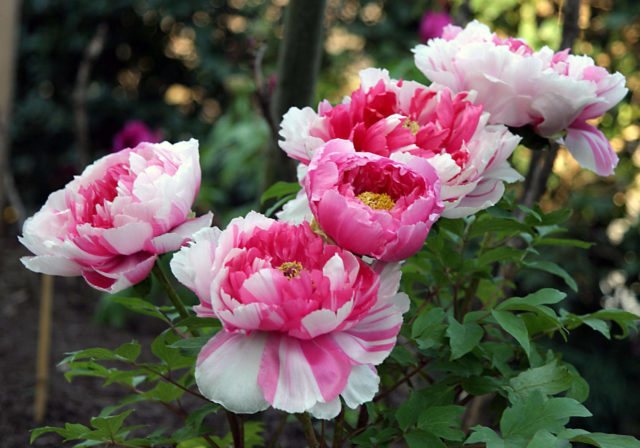

Fertilization is an important part of caring for a flower garden.
For different varieties of crops
Bone meal, ash, nitrogen help the plant grow healthy. Top dressing of the tree peony should be applied every 12 days. It starts in April. The last replenishment of flowers is carried out 12-14 days after the end of flowering.
We plant correctly
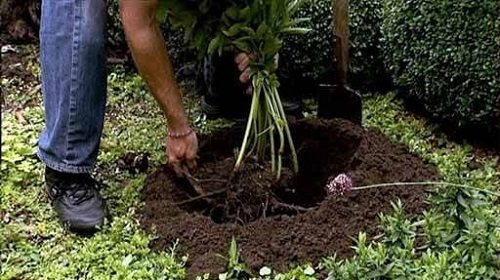

Well, we have prepared the planting hole, the planting material too, so it's time to start planting.
This is a very important stage in the cultivation of peonies, because the further development of our young plant, its life span and, of course, the splendor of flowering depend on how correctly we plant it.
We plant the peony in the upper part of the planting pit we have prepared, which is filled with garden soil.
Particular attention should be paid to the planting depth: renewal buds should be at a depth of no more than 3-5 cm on loamy soils, and on light sandy loamy soils - 5-7 cm.
And such a deepening of the buds must be maintained throughout the life of the bushes, and then our peonies will delight us for a long time with their abundant flowering.
And if the planting is shallow, then in spring they can suffer from late frosts, in summer - from overheating, and in winters with little snow - from frosts. And, as a result, some of the buds may die, then we will no longer get good flowering.
If we plant peonies too deep, for example, the uppermost bud will be at a depth of 15-20 cm, then we will never wait for the bushes to bloom, although they will look completely healthy in appearance.
Having installed the planting material at the depth we need, we fill it with fertile soil, but do not tamp it so as not to accidentally damage the buds and roots, but gently squeeze it with our hands, eliminating the voids.
Then we water it abundantly, add more earth, if necessary, and mulch the planting.
Peony bushes grow rather quickly, so they must be planted at a distance of at least 90-100 cm from each other.
This will further facilitate the processing of the bushes, provide good air circulation between them, which can prevent the appearance and spread of fungal diseases.
Calculation of dosage and rates
The dosage and rate of fertilization per 1 peony bush in spring depends on the quality of the soil, the phase of development of the plant and its age. Young bushes require more nitrogen for vigorous growth. For lush budding, add more phosphorus (P), nitrogen (N2) and potassium (K). When the kidneys are just forming, phosphorus (P) and potassium (K) are needed.
You can calculate the required amount of fertilizer by dividing the recommended amount of a trace element in grams by the content of this substance in the fertilizer package, multiplying by 100 (to get the result in percentage).
How to feed tree peonies in the fall
The peculiarities of fertilization depend on their type - it is not recommended to change the dosage and recommendations for feeding the plants on your own, as this can lead to the opposite result and worsen the condition of the bushes.
Recent Entries
Rose Petal Jam and Its 7 Health Benefits You Likely Didn't Know About What Fruit Are You According to the Zodiac Sign The 11 Best Grape Varieties That Will Help You Create Unique Homemade Wine
Terms and technology of fertilization
Fertilization technology:
- The first feeding of peonies in spring is carried out when the stems begin to sprout. 50 g of carbamide is added to a ten-liter bucket filled with water.
- When several weeks have passed after the initial feeding, special feeding tablets are added to the urea solution at the rate of 1 pc. 10 liters.
- The third treatment takes place after flowering is complete. Only micronutrient fertilizers are used. 2 tablets are diluted in a 10 l container with water.
The timing of fertilization depends on the season.
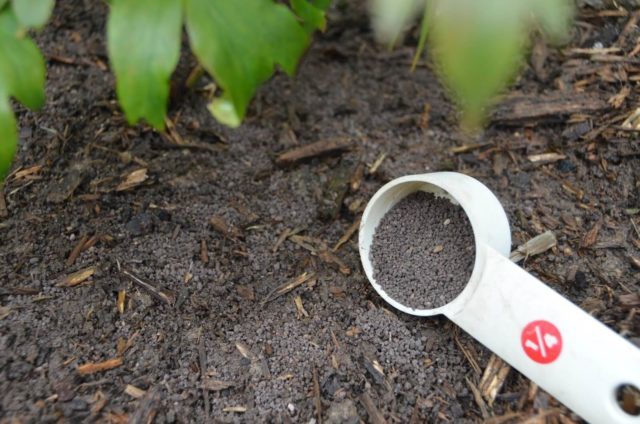

Immediately after the snow melts, feeding the peonies begins in spring
Early spring feeding
Fertilizer for peonies in spring allows the plant to avoid diseases and form buds. What fertilizers to apply in spring under peonies depends on the quality of the soil and the age of the bush. Feeding peonies after winter provides a quick supply of microelements to the roots with melt water. Spring processing and feeding of peonies should be aimed at accelerating the development of the stems. Therefore, liquid fertilizers with nitrogen will be effective.
Feeding peonies in early spring begins immediately after the snow begins to melt. You can water the bush with a solution of potassium permanganate (for 5 liters of water, 1 g of potassium permanganate). Top dressing of peonies in April consists in the use of ammonium nitrate. For 10 liters of water you need 15 g of nitrate.
Budding period
The bush begins to bloom only for 3 years. At this age, the plant has about 10 main stems. The second feeding of peonies in the spring in the country begins during the formation of buds.
To feed peonies during budding, you can prepare a mixture of:
- 10 g nitrogen (N2);
- 15 g potassium (K);
- 20 g phosphorus (P).
All these substances are dissolved in 10 liters of water. This dosage is enough for watering 1 bush.
Post-flowering period
When the bush has faded, after 14 days you can use the Kemira Kombi. Potassium monophosphate can be added to improve the effect.
The end of summer and autumn
Feeding peonies in spring and summer is important for the formation of buds. You can prepare a mixture of 10 g of nitrogen (N2) and the same amount of potassium, 15 g of phosphorus (P) per 10 liters of water. This amount of the mixture is enough for 1 adult and 2 young bushes.
The optimal period for feeding peonies in autumn is late September - early October. Stir 100 g of bone meal in a glass of wood ash. The mixture is evenly distributed around each bush and the soil is loosened. This is the final stage of nourishing the plant.
Autumn feeding: all the pros and cons
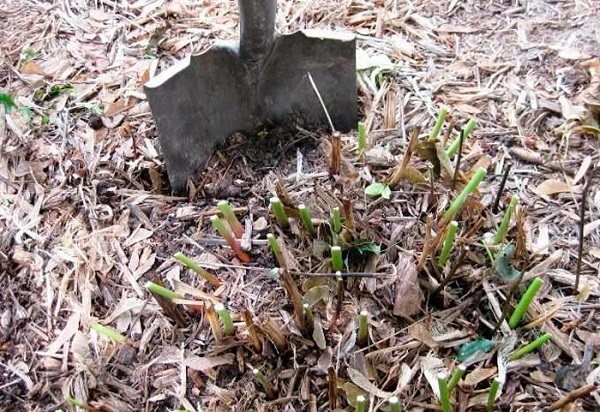

Feeding peonies in the fall plays a big role in the flowering of the culture.
Peonies are perennial crops that grow in one place for a long time and bloom actively in the summer. During this time, they give almost all the nutrients to flowers and leaves, so the quality of new inflorescences can deteriorate significantly.
The main feature of peonies is that the development of the root system of the bushes continues even after active flowering. If you take a closer look at the roots, you can see small thickenings on them, in which the nutrients necessary for the formation of buds and inflorescences accumulate. Accordingly, feeding peonies in the fall contributes to the appearance of lush flowers in the next season and helps to prepare for the winter cold.
Many gardeners consider the procedure for applying top dressing in the fall to be impractical and useless, but in fact this is not the case. You should not ignore it, otherwise next spring the flowers of the peonies will be small, and the leaves are pale and sparse.
Do I need to cover for the winter?
Peony has a high winter hardiness and, according to the generally accepted opinion, herbaceous species and varieties can withstand up to -40 Cº (zone 3 according to USDA). Therefore, adult bushes do not need winter shelter in the Moscow region, the Leningrad region, and even in the Urals and Siberia.
They also do not need to be dug up. Before wintering, it is enough to inspect the base of the bush so that the rhizome does not peep out of the ground and, if necessary, sprinkle it with soil a little.
Young peony
Young bushes (1-2 years old), cuttings, cuttings, shop seedlings OKS and ZKS in the first year of planting must be prepared for winter.
Before the onset of constant cold weather (October-November), sprinkle with earth or sprinkle with a 5-7 cm layer of peat (except for acidic soil) or old aged compost (3-4 years). After the snow melts (March-April), the mulch will need to be raked out.
Preparing for winter
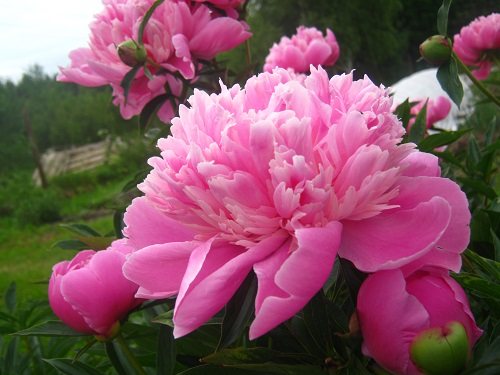

For the winter, we cut off the entire aboveground part of the plant to ground level. But we do this only after the first severe frosts, when the stems of the peonies will fall.
Up to this point, there is still an outflow of nutrients from the leaves and stems to the storage roots.
Therefore, early pruning will cause great harm to the plant.
Some growers explain the early cutting of the stems by the fact that the leaves have dried up, but the leaves dry up only in diseased plants, and if it is healthy, then the leaves remain fresh and beautiful until the very frosts.
After we cut off the aerial part, it is worth paying attention to whether the buds at the base of the shoots are bare.
If this happens, then you need to huddle the bushes by 7-10 cm.
Usually, peonies are not covered for the winter. The exception is newly planted plants, it is recommended to cover them with peat or humus with a layer of 10-15 cm. In early spring, before the emergence of shoots, we remove this covering layer.
Organics of industrial production, we use for peonies
"Baikal" is the most popular concentrate respected by experienced flower growers. Naturally improves the organic balance of the soil. Contains special beneficial bacteria not only for peonies, but also for other plants. Strengthens the immune system, accelerates the composting of organic residues.
"Biomaster" contains many useful macro and microelements. Its highlight is the extract of relict sapropel, which represents a certain kind of dirt. It has a neutralizing and disinfecting ability.
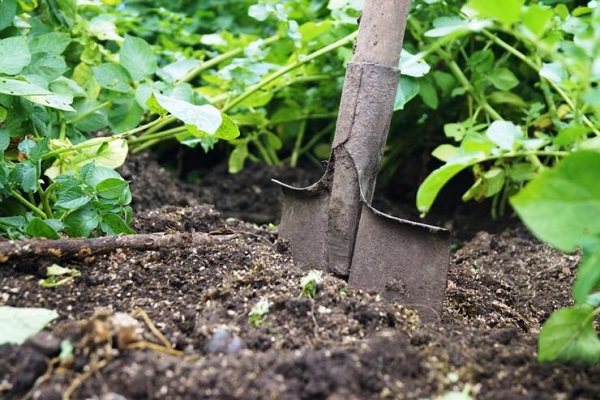

Agroprirost
A valuable novelty, it stands out among organic fertilizers for its special benefits. Flowers are fertilized on clay and loamy soils. The effect is especially noticeable on badlands. After use, the quality of the soil increases by an order of magnitude. Available in solid granular form. Therefore, it loosens the soil well and makes it lighter. To get beautiful strong buds of "Agroprirost" make up to 10-12 kg per 1 m2. Fertilizer suitable for all varieties
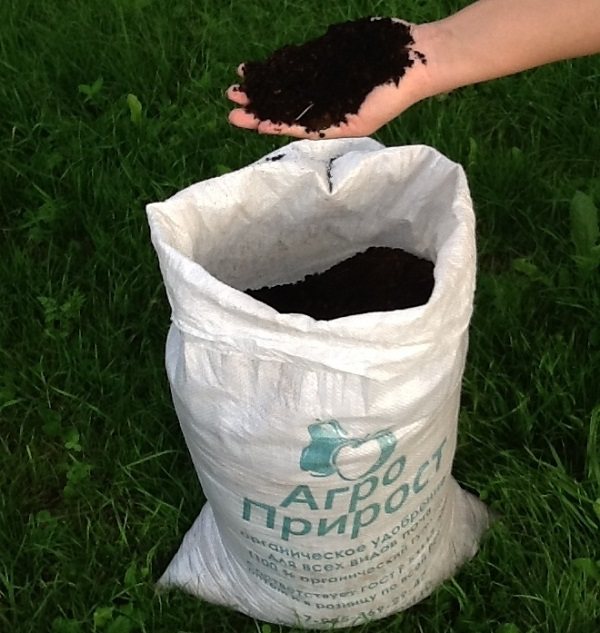

Table: Signs of a Nutrient Deficiency
| Name of substance | Signs of deficiency |
| Nitrogen | Yellowing of the leaves is observed |
| Phosphorus | The foliage turns first dark green and then purple. Over time, the darkened leaves fall off |
| Potassium | Peonies fade quickly, and the tips and edges of the leaves of the shrub become yellowish brown. |
| Magnesium | The leaves between the veins become yellowish or orange in color |
| Iron | The veins remain green, and the foliage becomes yellowish or whitish. |
| Copper | Leaves turn pale and deformed |
| Zinc | Peony lags behind in development. Yellowish spots appear on the leaves. |
Major mistakes
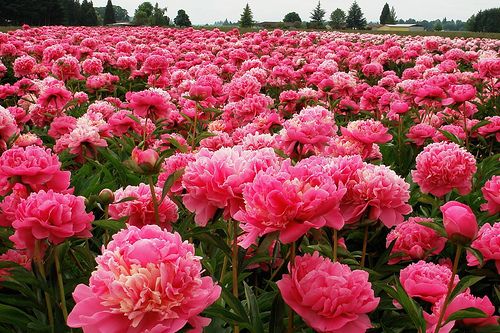

Sometimes peonies do not bloom well, and sometimes they do not even bloom at all, although, it would seem, the bushes look healthy.
What mistakes have we made when growing peonies?
And they can be as follows:
1.The place for planting was not chosen correctly - too shady, close to buildings, trees and shrubs, not sufficiently wet or, conversely, too wet (there is no drainage).
2. Planting the plant is too deep or too shallow.
3. The peony was planted recently and the planting material was divided very finely.
4. The peony bush is already old and requires transplantation and division.
5. The buds were damaged by late spring frosts.
6. Increased acidity of the soil.
7. Excessive amount of nitrogen fertilizers.
8. Lack of nutrition and moisture during the period when the formation of renewal buds is taking place.
9. Leaves were cut very early in the fall (before they lodged).
As you can see, dear readers, it is not so difficult to care for peonies: water on time, weed weeds, loosen the soil and feed.
And they, in turn, will give us a lot of pleasure during their flowering period, and not only us, but all those who pass by our gardens, will also admire this fantastic beauty.
See you soon, dear readers!
The meaning of autumn pruning
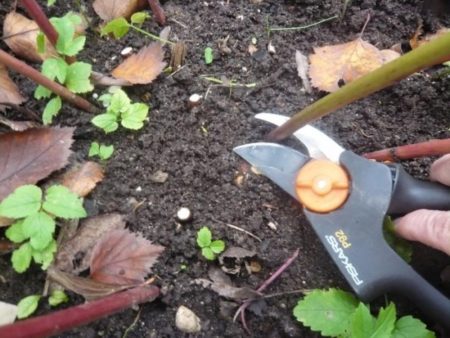

Novice gardeners prune the leaves when the bushes fade, because the wilting shrubs greatly spoil the appearance of flower beds.Crop experts believe that it is best to prune the leaves when the cold weather sets in. What will give positive results for the shrub:
- Before the onset of winter cold, plants restore their root system.
- Moisture accumulates in the root tubers so that the flowers can germinate in the spring.
- Peonies store energy after the end of the flowering period.
Why feed peonies?
Peonies bloom in spring. If we talk about late varieties, then they can bloom in summer, but regardless of the flowering time, you need to start taking care and fertilizing them from early spring so that they become an ornament, and not a "gray spot" on a flower bed.
But what if you don't fertilize the peonies at all? Yes, perhaps for the first time, subject to high-quality soil, the plant will bloom magnificently even without additional dressing. But over time, the flowers will become smaller, they will begin to bloom later and stand less, it is quite possible that the color changes (fading of the petals), the appearance of frequent diseases, not to mention pests, and as a result, flowering will no longer bring the same joy as before, because it in general, it may no longer be observed.
Interesting!
Little fertilizer can harm peonies in spring. When a warm spring comes, it is worth taking any complex mineral fertilizer and in a dry form embedded in the ground around the peonies. Approximately 40-50 g is taken per square meter.
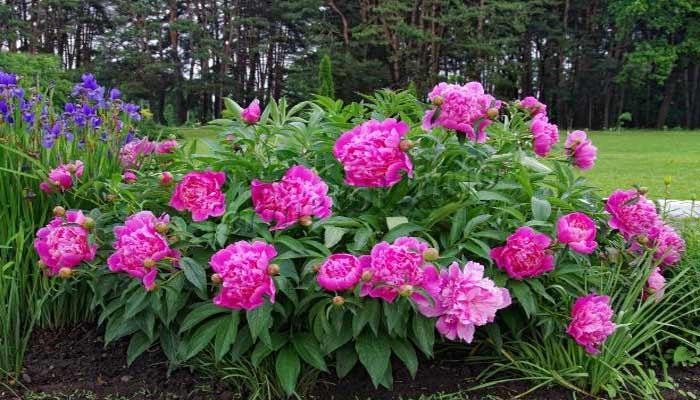

Photo of blooming peonies
It should be concluded that feeding for peonies is just as important as for roses, other types of flowers, or any crop in general, including cucumbers or tomatoes. This is an integral part of care that must not be forgotten! Many novice flower growers are wondering how to feed peonies in spring for lush flowering, but they do not always get an answer to this question. But there is nothing difficult here!
At what age do we start applying autumn fertilizers?
Up to 3 years old, peonies are quite enough for the growth of nutrients and minerals introduced into the hole when they are planted. But when they turn three years old, these are already flowers in full bloom, young individuals who have grown stronger. Now it depends on you how they will bloom - with gorgeous buds or small flowers. Active flowering takes a lot of strength and nutrients from peonies. Now is the time to help handsome men to be always irresistible. In the fall, potassium-phosphorus feeding is mandatory for them. It will provide decent flower bud quality.
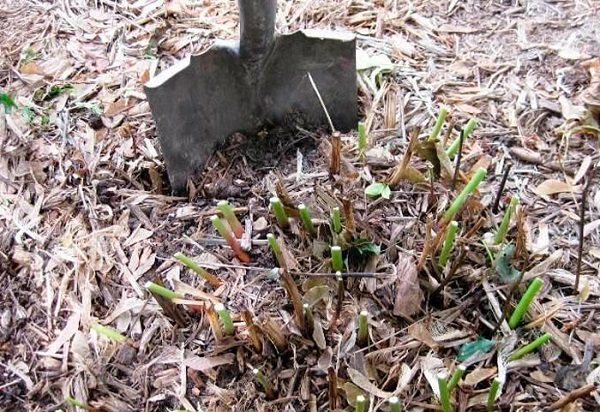

Secrets of lush flowering, which fertilizers to choose?
Complete fertilizers for peonies are mineral and organic substances. Minerals include various salts. They are brought in strictly with the instructions on the package.
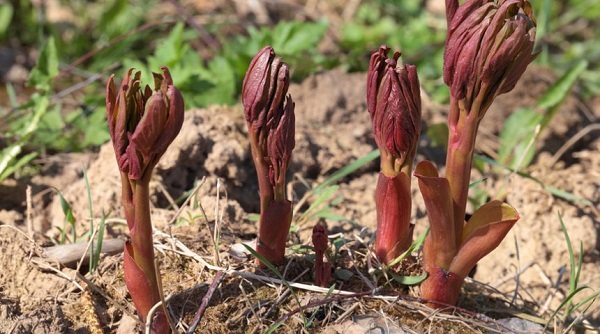

Features in different regions
Different climatic zones have different requirements for winter shelter measures:
- So, in the Volga region with its temperate continental climate, a mound made of any mulching material will be a sufficient shelter from low temperatures.
- Siberia has a sharply continental climate with long winters and strong hypothermia of the earth's surface. Therefore, additional cover for the underground part of the bushes is simply necessary. Boxes, crates, containers made of cardboard, wood or plastic are placed on top of the mulch blanket. Another option - instead of a box, you can make a hut from the branches of coniferous plants, strengthening it in the ground from being blown away by the wind. Another way of protection would be the construction of a wire or wooden frame over the trimmed bush, the interior of which is filled with mulch and wrapped on top with modern agrotextile material.
- The harsh mountain conditions of the Urals with sharp temperature fluctuations will require the same additional "insulation".
- Residents of the Moscow region and north-west Russia should also insure their pets in case the frost can hit the ground not covered with snow.
Helping to bloom
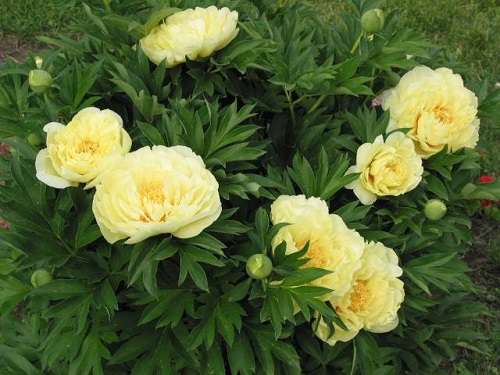

In the first year after planting (and better in the second), you should not allow the peony to bloom, as it will weaken the plant and prevent the root system from fully developing.
Therefore, the buds formed at this time should be removed so that all nutrients are directed to the general development of the plant, and not to flowering.
So prepare mentally for the fact that you will see the first flowers on a newly planted peony only in the third year, and real full flowering with the size and color of flowers characteristic of the variety will be only in the fifth year.
If you want large top flowers, then the side buds must be removed when they reach the size of a pea.
If you prefer the abundance of flowers on the bush and its long flowering, then you should not remove the side buds.
Faded peonies should be immediately removed from the stem, cutting them to the first well-developed leaf and leaving a very small stump.
Otherwise, falling petals, falling on the leaves, can provoke a disease with gray rot, especially in rainy weather.
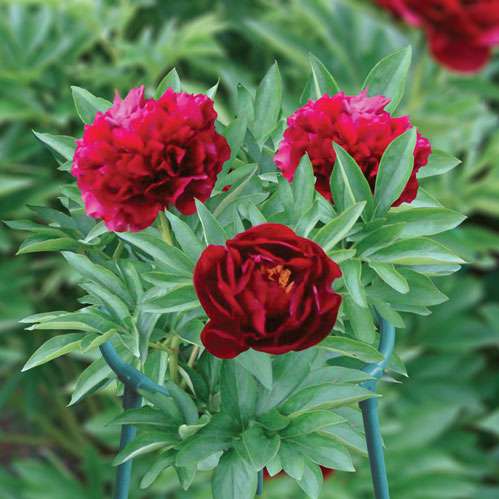

During the flowering period, bushes of peonies with large heavy flowers need support, since, even with powerful stems, they inevitably begin to lean to the ground.
And with strong winds and precipitation, flowers, bending almost to the ground, become polluted and lose their decorative effect.
Supports are best placed before flowering.
A few words about digging
It is worth digging out the roots of the plant taking into account the climatic conditions. In some cases, this can be successfully done in early October. However, it is better to complete the work by mid-September. Before starting the procedure, it is recommended to trim the leaves from the culture. Then the plant is dug in at a distance of 25 centimeters.
To safely remove the roots, you need to immerse the shovel as deep as possible into the ground, and then gently lift the plant. Then the peony should be cleaned of clods of earth, rinse the roots under a hose and begin the division process.
To begin with, it is recommended to carefully study the condition of the roots. The affected fragments should be removed. The remaining items can be saved. It is recommended to separate the young root from the main rhizome. To do this, you can use a small hatchet or pruner. The cut area should be rubbed with charcoal. This will help prevent the development of fungal diseases.
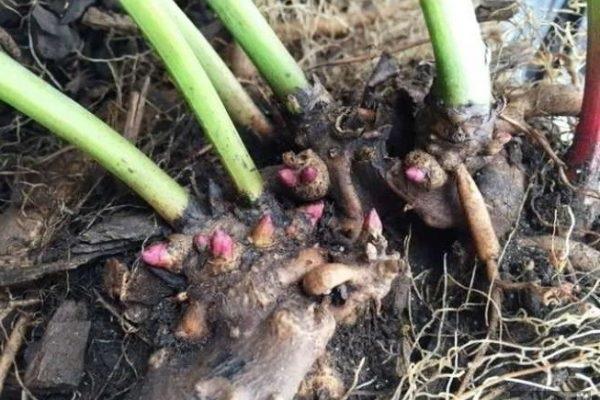

It is important to maintain an optimal temperature during the storage period of the roots. It should be 2-4 degrees. You can keep the roots in wooden boxes. They are placed in the basement or on the bottom shelf of the refrigerator. Planting material should be covered with ash and sawdust.
In some cases, the kidneys begin to swell in winter. At the same time, small suction roots appear below. It is not recommended to store them further. The peony should be placed in a pot filled with damp soil and stored in a cool place. In the spring, the plant can be transplanted to the site.
Preparing a culture for winter is a responsible process. The readiness of the plant for the next season depends on the correctness of the procedures. Therefore, experts advise to carefully study the recommendations and strictly adhere to them.
Soil mulching, fertilizer and blanket, two in one
In the fall, it's time to mulch the flowers before wintering. For this, the earth is covered with various natural materials. It can be straw, shredded dried grass, sawdust, hay, leaves. Everything that will cover the earth and protect it from cold and heat. And also to prevent excessive evaporation.
Useful properties of mulch:
- performs a thermal insulation function;
- enriches the earth with natural organic matter, the decomposition of which releases the most useful nutrients;
- gives the flower garden a well-groomed look;
- prevents moisture loss through evaporation;
- inhibits many diseases;
- suppresses the germination of weeds.

